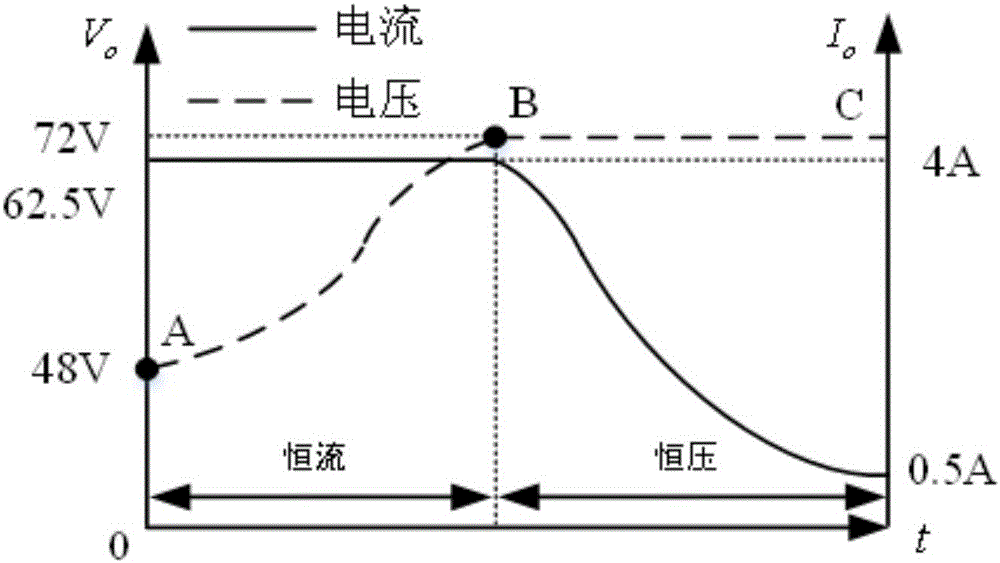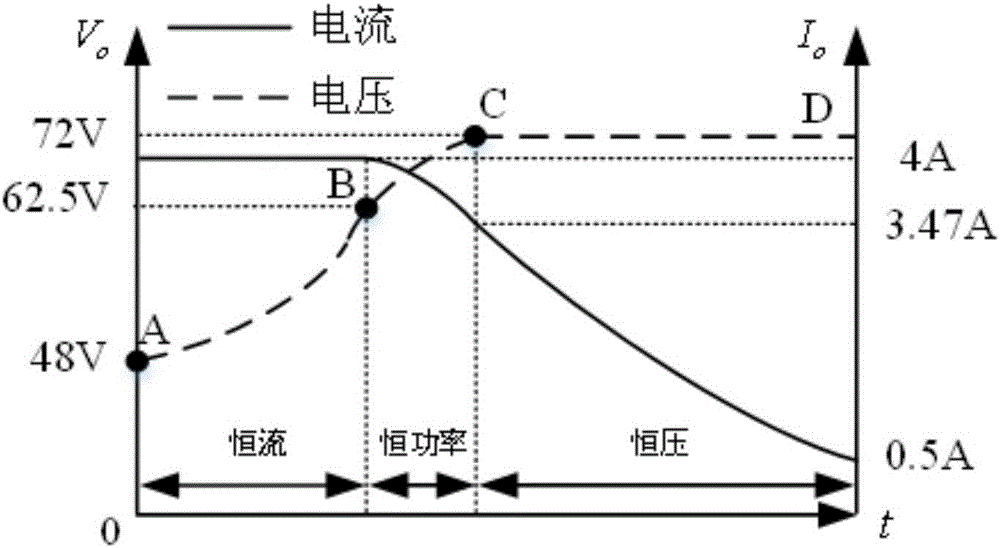Magnetically-coupled resonant wireless power transmission system parameter design method based on SS topology
A technology of wireless energy transmission and magnetic coupling resonance, applied in the direction of collectors, electric vehicles, electrical components, etc., can solve the problem that there is no battery parameter design method, and achieve the effect of meeting the charging characteristics and safety requirements
- Summary
- Abstract
- Description
- Claims
- Application Information
AI Technical Summary
Problems solved by technology
Method used
Image
Examples
Embodiment 1
[0041] see figure 1 , taking the 250W low-power charging platform as an example, the front-stage 80V ideal voltage source passes through the inverter, and the DC is inverted to generate a high-frequency AC square wave voltage to drive the resonant network on the transmitting side. The resonant network on the transmitting side generates a high-frequency electromagnetic field, and the resonant network on the receiving side The network induces a high-frequency electromagnetic field to generate a high-frequency AC voltage, which is finally charged to the battery after being rectified by a rectifier.
[0042] 2(a) is the ideal battery charging curve. The battery is charged with a constant current in section A-B, the charging current remains unchanged, and the charging voltage gradually increases with time. When charging at a constant voltage in section B-C, the charging voltage remains unchanged, and the charging current increases with time. The time gradually decreases, and the eq...
PUM
 Login to View More
Login to View More Abstract
Description
Claims
Application Information
 Login to View More
Login to View More - R&D Engineer
- R&D Manager
- IP Professional
- Industry Leading Data Capabilities
- Powerful AI technology
- Patent DNA Extraction
Browse by: Latest US Patents, China's latest patents, Technical Efficacy Thesaurus, Application Domain, Technology Topic, Popular Technical Reports.
© 2024 PatSnap. All rights reserved.Legal|Privacy policy|Modern Slavery Act Transparency Statement|Sitemap|About US| Contact US: help@patsnap.com










